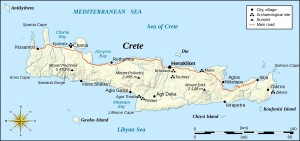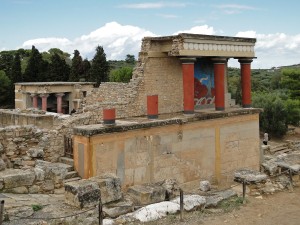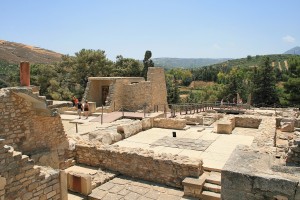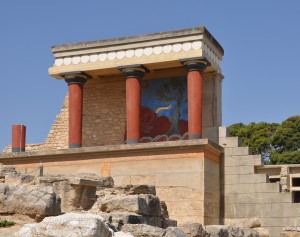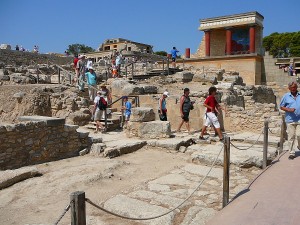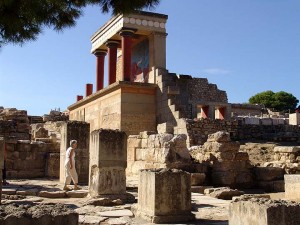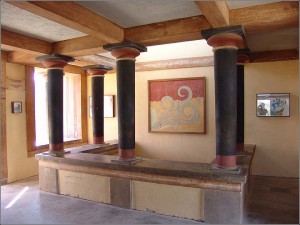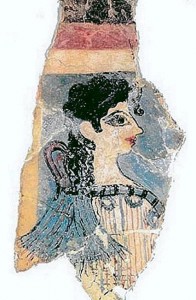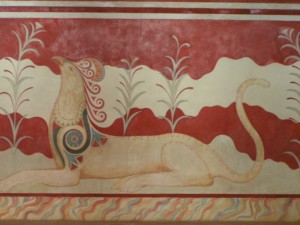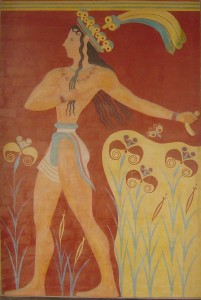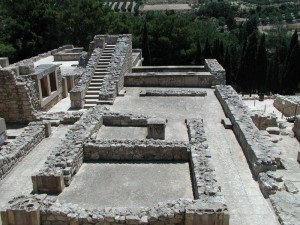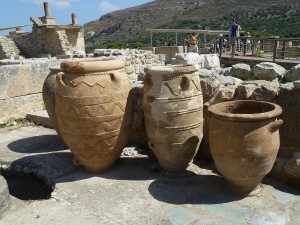Written by Soudip
October 18th 2014You Are Here
Home > Greece > Delphi Historical Facts and PicturesKnossos Historical Facts and Pictures
Located 5 km northeast of the city of Iraklion, Knossos is one of the largest archaeological sites of Bronze Age. It is also considered as the most ancient city in Europe. Although the Roman coins scattered around the site confirms the identification of Bronze period, other evidences suggest that the site was occupied during the Neolithic period. Many legends are related to this archaeological site of Knossos. According to Greek mythology, King Minos resided in a palace at Knossos, where the skillful craftsman Daedalus constructed a labyrinth under the command of Minos. It was built to retain his son, Minotaur.
Knossos Map
Structural description of Knossos
The complex is built around an elevated central court at the crest of Kephala Hill. The remnants of the House of the Frescoes are located on the northwest corner of the complex. The Customs House and Northeast House are situated on the north side of the complex. The palace complex also comprises the Royal Villa, and the little palace within its territory.
Knossos Entrance
Inside Art and Architecture
Initially the Great Palace was built on the remnants of Neolithic settlement. After the destruction of the original structure in 1700 BC, a new structure was rebuilt that covered an area of 22,000 square meters. The new multi-storied structure exhibited an intricate plan. The palace included extensive storerooms, entrances on each cardinal faces and a theater. Advanced architectural techniques are reflected in the richly designed Minoan columns and the fresco murals on the walls.
The site was first discovered by Minos Kalokairinos in 1878. Later in 1900, an archaeological team, under the guidance of English archaeologist Sir Arthur Evans, started the excavations in Knossos, which continued for thirty-five years.
Category
GreeceWritten by Soudip
October 18th 2014






